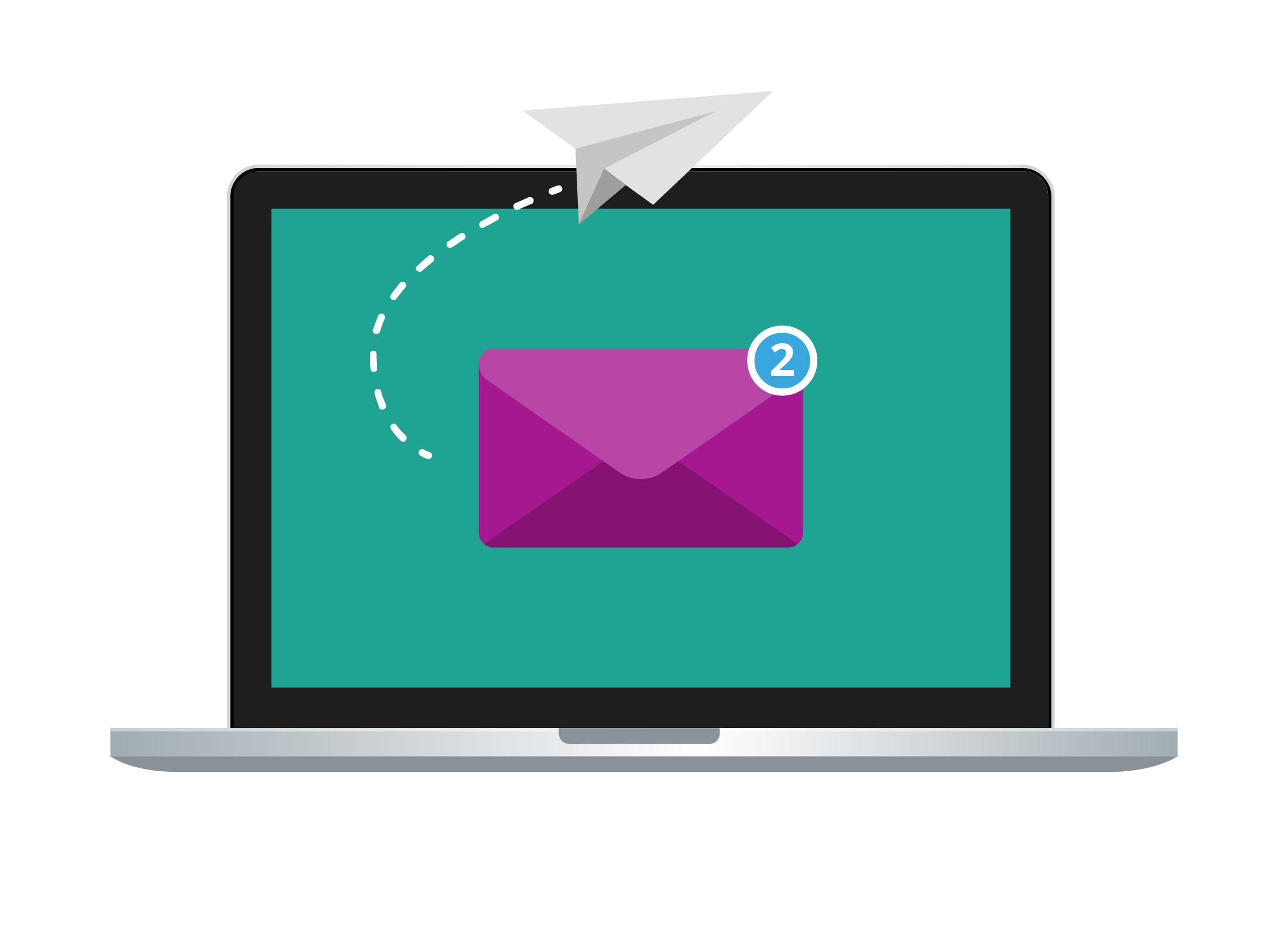Introduction to email
Learn what email is and how it works, and get some tips on other uses for your email address.
Email is a messaging service on the internet that's like a mix of sending a telegram and posting a letter:
- Email is free to send
- You need an existing internet connection
- Email consumes very little data
- You need available data allowance on a home or mobile internet plan to use email
- Email is accessed via an email address and a strong password
- You can use an email address to sign in to things online and as your main online identity.

Email is sent and received via a service
To use email, you need to choose an email service. These can be free, or have subscription options with more features. Some popular free services include Gmail (from Google), Outlook (from Microsoft), and Yahoo Mail.
What is an email address?
An email address consists of your username, a special @ (pronounced at) symbol, and an email service name, such as gmail.com or yahoo.com. For example: james@tada.com.au
An email address is not case sensitive, but must be spelled exactly right:
- JAMES@tada.com.au and james@tada.com.au are treated as the same address, but jame@tada.com.au is not.
- When you click Send in your email service, the email will be sent to the address via the internet.
When you send an email, it is transmitted to the recipient's email address permanently. It's not possible to retrieve a delivered email.
Some important email terms and functions
All email services use the following terms, with only slight variations and differences:
- Mailbox: where all your email is stored, and which you access with your email address and password
- Folder: sometimes called a Label, a part of your Mailbox you can organise email into
- Inbox: a special folder that shows new and unread emails
- Sent Folder: when you send an email, a copy is placed in this folder for your reference
- Deleted Items: sometimes called Trash or Bin, and where deleted emails go
- From: appears at the top of an email to show who has sent it to you
- To: shows the recipient of an email you have sent
- Compose: sometimes called New Email, this is a button in your email service you can click to start writing a new email
- Reply: click this to reply to an email
- Forward: sometimes written as Fwd, this allows you to send an email on to someone else
- CC: short for Carbon Copy, this is when you put multiple addresses in the To field to send an email to many people at once
- BCC: short for Blind Carbon Copy, which hides the email addresses so people can't see who you've sent the email to
- Spam: sometimes called Junk email, this is unwanted email, usually advertising. Your email service will sort spam into a spam folder you can ignore. It's safest to never open spam, and never forward it to anyone.
How to check your emails on a computer
To catch up with your emails or send a new email:
- Sign in to your desktop or laptop computer, and open your web browser.
- Navigate to your email's web page (for example, https://mail.google.com).
- Sign in with your email address and password.
- Your Inbox will appear, and new or unread emails will be shown in bold.
- Use this page to read, write, forward, or reply to email.
Staying safe when using email
There are some precautions to take when using email that will keep your computer, and you, safe:
- Delete unexpected or suspicious mail. Scammers target email addresses at random because emails are free to send.
- Never give passwords or personal details over email. Legitimate companies and organisations will never ask for these details via email.
- Use a unique strong password. Don't use your email password for any other service.
- Use a second email. This can help reduce the amount of spam or unwanted email you receive at your main email address.
- Unsubscribe from newsletters. Some businesses will send email newsletters, which can be annoying. If you are unable to unsubscribe, you can forward a copy of the spam to report@submit.spam.acma.gov.au.